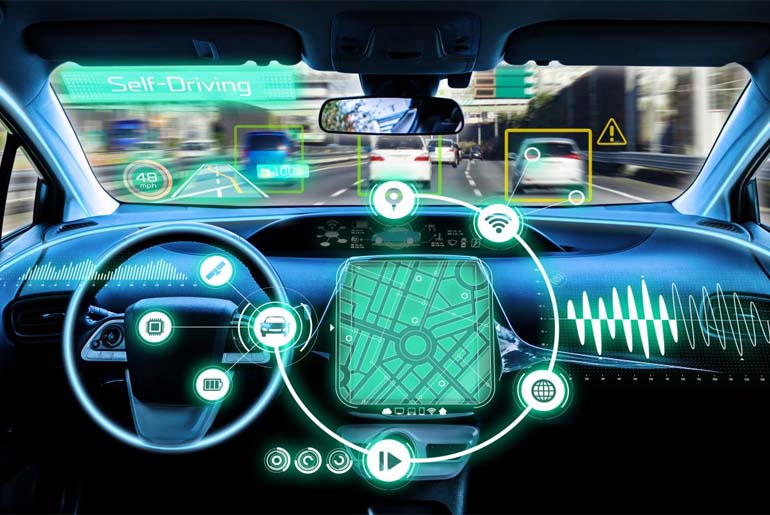Automotive electronics have revolutionized the way we interact with our vehicles, transforming them from mere transportation tools into sophisticated, connected machines. As technology continues to advance, the role of automotive electronics becomes increasingly pivotal in shaping the future of driving. This blog explores the current state of automotive electronics, their key components, and how they are redefining the driving experience.
The Evolution of Automotive Electronics
Automotive electronics have come a long way since their inception. In the early days, vehicles were equipped with basic electrical systems for ignition and lighting. Today, electronics play a crucial role in virtually every aspect of a vehicle’s operation, from engine management to infotainment systems. This evolution can be attributed to advancements in technology, increasing consumer demand for enhanced features, and the push towards greater safety and efficiency.
Key Components of Automotive Electronics
- Engine Control Units (ECUs): Engine Control Units are the brain of modern vehicles, managing various engine functions to optimize performance, fuel efficiency, and emissions. There are multiple ECUs in a vehicle, each responsible for different systems, such as the powertrain, transmission, and braking. Advanced ECUs use complex algorithms and data from various sensors to ensure smooth and efficient engine operation.
- Advanced Driver Assistance Systems (ADAS): ADAS technologies are designed to enhance driver safety and convenience. These systems include adaptive cruise control, lane-keeping assist, automatic emergency braking, and parking assistance. ADAS relies on a network of sensors, cameras, and radar to monitor the vehicle’s surroundings and provide real-time feedback to the driver.
- Infotainment Systems: Infotainment systems have become a central feature in modern vehicles, offering a range of functionalities from navigation and media playback to smartphone integration. These systems are designed to provide a seamless and intuitive user experience, often featuring touchscreens, voice recognition, and connectivity options like Bluetooth and Apple CarPlay or Android Auto.
- Body Control Modules (BCMs): BCMs manage various electrical functions within the vehicle, including lighting, window controls, and climate control systems. They play a crucial role in ensuring that these systems operate reliably and efficiently, contributing to overall vehicle comfort and convenience.
- Battery Management Systems (BMS): In electric vehicles (EVs) and hybrid vehicles, Battery Management Systems are essential for monitoring and managing the health and performance of the battery. BMS ensures that the battery operates within safe parameters, balancing charge levels and optimizing energy usage to extend battery life.
The Impact of Automotive Electronics on Driving
- Enhanced Safety: One of the most significant benefits of automotive electronics is the enhancement of vehicle safety. ADAS technologies help prevent accidents by providing features like automatic braking, collision warnings, and lane departure alerts. These systems are designed to assist drivers in making safer decisions and reacting quickly to potential hazards.
- Improved Efficiency: Automotive electronics contribute to improved fuel efficiency and reduced emissions. Engine control units optimize fuel injection and ignition timing, while hybrid and electric vehicles use advanced battery management systems to maximize energy efficiency. Additionally, technologies like regenerative braking in EVs help recover and reuse energy, further enhancing efficiency.
- Increased Comfort and Convenience: Infotainment systems and body control modules significantly enhance the driving experience by offering features like climate control, entertainment options, and seamless connectivity. These systems provide a more enjoyable and personalized driving experience, allowing drivers to stay connected and entertained while on the road.
- Vehicle-to-Everything (V2X) Communication: V2X communication is an emerging technology that enables vehicles to communicate with each other and with infrastructure such as traffic signals and road sensors. This technology aims to improve traffic flow, reduce congestion, and enhance overall road safety. V2X communication is a critical component of the broader vision for smart cities and autonomous driving.
Challenges and Future Trends
Despite the numerous benefits, automotive electronics also present challenges. The increasing complexity of electronic systems can lead to higher costs and potential reliability issues. Additionally, cybersecurity concerns arise as vehicles become more connected and data-driven. Ensuring the security of automotive electronics against cyber threats is a critical area of ongoing research and development.
Looking to the future, several trends are shaping the evolution of automotive electronics:
- Autonomous Vehicles: The development of autonomous vehicles relies heavily on advanced automotive electronics, including sensors, cameras, and artificial intelligence algorithms. As technology progresses, we can expect to see more sophisticated autonomous driving systems that promise to revolutionize transportation.
- Electric and Hybrid Vehicles: The shift towards electric and hybrid vehicles is driving innovation in automotive electronics, particularly in areas like battery management and energy efficiency. Advances in these technologies will play a crucial role in the widespread adoption of sustainable transportation solutions.
- Integration with Smart Infrastructure: The integration of vehicles with smart infrastructure, such as smart traffic lights and connected roadways, will enhance the overall driving experience. This integration will enable more efficient traffic management and improved safety through real-time data sharing and communication.
- Enhanced User Experience: Future automotive electronics will focus on providing an even more seamless and intuitive user experience. This includes advancements in infotainment systems, voice recognition, and personalized settings that adapt to the driver’s preferences.
Conclusion
Automotive electronics have transformed the automotive industry, making vehicles safer, more efficient, and more enjoyable to drive. As technology continues to evolve, the role of electronics in vehicles will only become more critical. From enhancing safety with advanced driver assistance systems to improving efficiency with sophisticated engine control units, automotive electronics are at the forefront of innovation in the automotive world. The future promises even more exciting developments, as we move towards autonomous driving, electric vehicles, and smarter transportation solutions.


